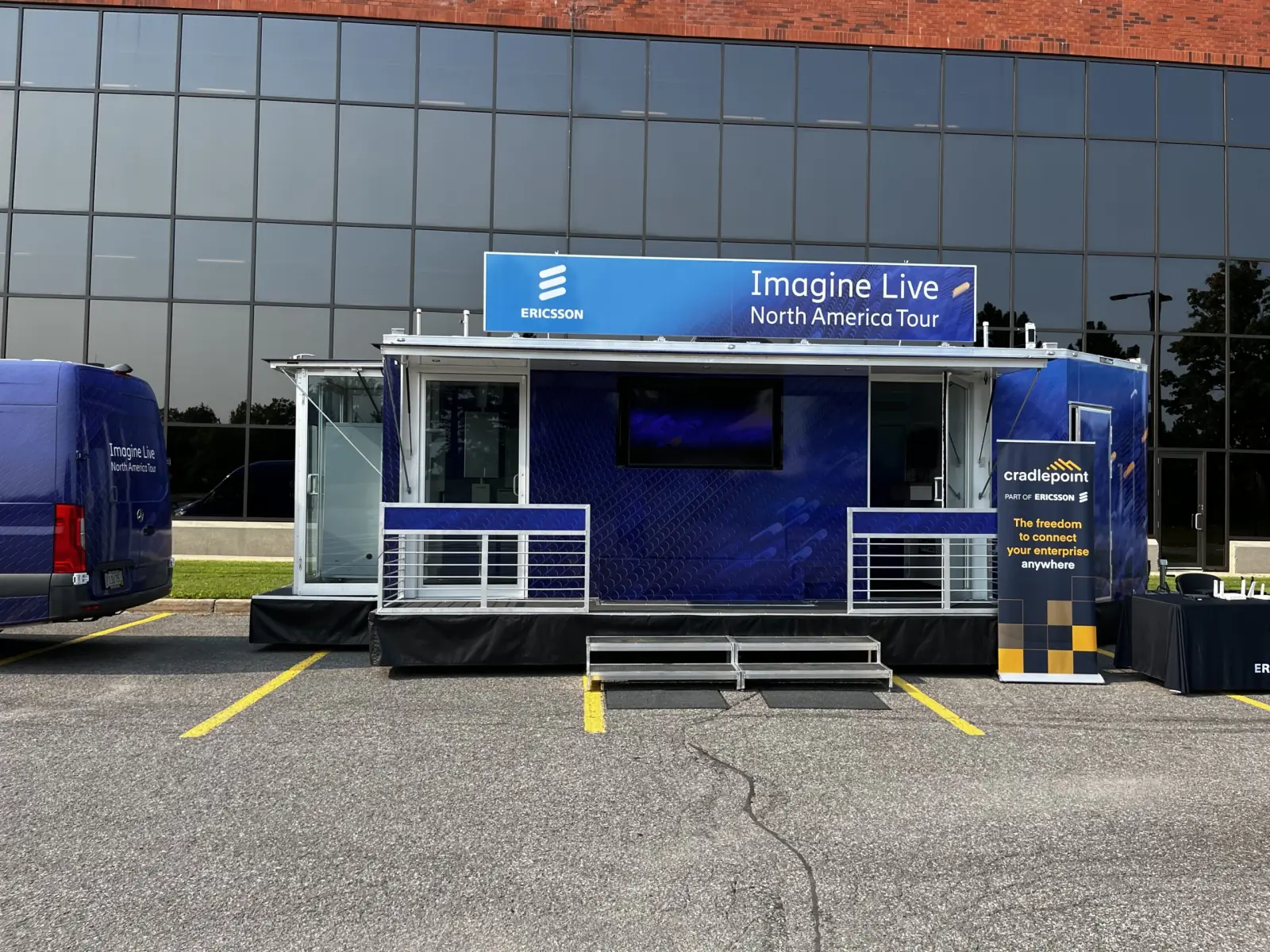
Employees at Kanata’s Ericsson office had the opportunity to take a look at the company’s latest 5G innovation – all from the comfort of their parking lot.
Ericsson’s Imagine Live North American tour, which features a travelling trailer outfitted with the company’s latest tech, made a stop in the Kanata tech park to see what the year 2030 might look like with improvements in 5G programmability. The mobile unit will visit more than 60 customer sites across Canada and the U.S.

The goal of the tour is to allow current and prospective clients to learn more about Ericsson’s radio system, private 5G and various Operations Engine technologies. In a COVID era when travel is still a bit challenging, it’s a little like bringing the trade show booth to the customer.
In the mobile unit, visitors were able to interact with the hardware on display, watch product demonstrations and talk to Ericsson’s experts.
A big draw for attendees is one of the company’s new cell receivers to go on cell towers, the A3268, which weighs only 19 kilograms – half of what a typical cell weighs, making it easier for installation.
 Also catching a lot of folks’ attention is the private, mobile 5G networks Ericsson has created.
Also catching a lot of folks’ attention is the private, mobile 5G networks Ericsson has created.
Mark Murphy, a technology architect from Texas travelling with Ericsson’s Imagine Live tour, says the tech on display gives us a chance to imagine what life may be like in the future, where global connectivity is a routine occurrence. He has a way to explain that connectivity on a personal level.
“I like to think of it as a personal butler and valet,” Murphy explains. Some would call it AI, but he comes back to programmability.
“If I think of my phone as the router, all my information is in the cloud, including my preferences for things like the temperature in my home. That’s my butler, it knows when I like to run the dishwasher, the washer/dryer, how hot/cold I like it, etc.”
“But then when I travel, all of those preferences move with me in the cloud. My butler stays home, but now I have my valet. That valet will know when I check into a hotel room how I like the room to feel,” he adds. Of course there are more sophisticated examples, but this was the easiest way to explain the company’s plans for a more programmable network.
Programmability also means that cell providers can be more efficient and sustainable with a 5G network – maximizing service at heavily-populated events (think of the masses gathered around Parliament Hill on Canada Day, or the morning rush hour along the Queensway).
The unit packed a lot of info into a small space – all of which was powered by solar energy and rechargeable batteries, part of Ericsson’s commitment to cut emissions by 50 per cent throughout its supply chain and portfolio by 2030.
Article and images by Melanie Coulson



